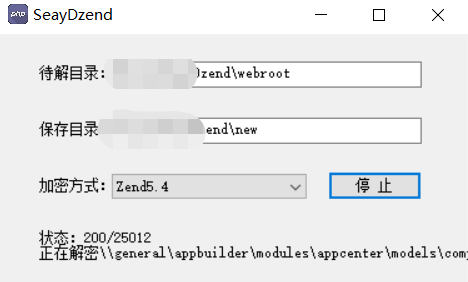I' using KineticJS to drawing a logo, both top an bottom lines are bezierCurveTo.
I need to draw lines between them and so I need to locate the points inside both curves.
What I thought to use was get the X coordinate and get the Y coordinate.
Using method bezierCurveTo I can find the position.
The problem is bezierCurveTo use the first parameter as percent and my two berzier are not equivalent, so is not a solution for me.
Is there any function that given tree points and X returns the Y ?
Edited
I'll try to explain it better with the next example
 I have the point C. I need the point A and B which are the intersection of the vertical line given by the point C and the bezier curves, but beziers are not functions.
I have the point C. I need the point A and B which are the intersection of the vertical line given by the point C and the bezier curves, but beziers are not functions.
Given an X coordinate: How to get the Y coordinate of 2 vertically stacked bezier curves.
I can think of 2 ways, both use “brute force”.
First method: examine pixels:
- Draw both your beziers on a separate canvas.
- Use context.getImageData to get an array of all the vertical pixels on the canvas at coordinate X.
- Iterate through each vertical Y pixel at your desired X coordinate
- If you find a non-transparent pixel, you've hit the Bezier (and it's Y)
- Iterate from top to bottom until you find the top bezier Y.
- Iterate from bottom to top until you find the bottom Bezier Y.

Here is code and Fiddle for the first method: http://jsfiddle.net/m1erickson/uRDYf/
<!doctype html>
<html>
<head>
<link rel="stylesheet" type="text/css" media="all" href="css/reset.css" /> <!-- reset css -->
<script type="text/javascript" src="http://code.jquery.com/jquery.min.js"></script>
<style>
body{ background-color: ivory; }
#canvas{border:1px solid red;}
</style>
<script>
$(function(){
var canvas=document.getElementById("canvas");
var ctx=canvas.getContext("2d");
// draw a top bezier
ctx.beginPath();
ctx.moveTo(50,50);
ctx.bezierCurveTo(125,0,150,100,250,75);
ctx.lineWidth=3;
ctx.strokeStyle="black";
ctx.stroke();
// draw a bottom bezier
ctx.beginPath();
ctx.moveTo(50,150);
ctx.bezierCurveTo(125,0,150,100,250,175);
ctx.lineWidth=3;
ctx.strokeStyle="blue";
ctx.stroke();
// get an array of all the pixels in the canvas
var x=100; // put your X coordinate value here
var iData = ctx.getImageData(x,0,1,canvas.height);
var data = iData.data;
var w=canvas.width;
var h=canvas.height;
var theY1=-999; // your top result
var theY2=-999; // your bottom result
// iterate through each Y at your vertical X coordinate
// Examine the opacity value at the XY
// if the pixel is not transparent, you have found your Y
for(var y=0; y<h; y++) {
if(data[y*4+3]>10){
theY1=y;
break;
}
}
// now iterate backwards to get the Y of the bottom curve
for(var y=0; y<h; y++) {
if(data[(h-y)*4+3]>10){
theY2=(h-y);
break;
}
}
// testing -- display the results
ctx.beginPath();
ctx.moveTo(x,0);
ctx.lineTo(x,h);
ctx.strokeStyle="lightgray";
ctx.stroke();
ctx.beginPath();
ctx.arc(x,theY1,4,Math.PI*2,false);
ctx.closePath();
ctx.arc(x,theY2,4,Math.PI*2,false);
ctx.closePath();
ctx.fillStyle="red";
ctx.fill();
}); // end $(function(){});
</script>
</head>
<body>
<canvas id="canvas" width=300 height=300></canvas>
</body>
</html>
Second method: use the Bezier curve formula to repeatedly "guess" the Y coordinate.
FYI, the cubic Bezier actually does have a formula
// where ABCD are the control points and T is an interval along that curve
function CubicN(T, a,b,c,d) {
var t2 = T*T;
var t3 = t2*T;
return a + (-a * 3 + T * (3 * a - a * T)) * T
+ (3 * b + T * (-6 * b + b * 3 * T)) * T
+ (c * 3 - c * 3 * T) * t2
+ d * t3;
}
And you can calculate XY points along that formula like this:
// cubic bezier T is 0-1
// When T==0.00, you are at the beginning of the Curve
// When T==1.00, you are at the ending of the Curve
function getCubicBezierXYatT(startPt,controlPt1,controlPt2,endPt,T){
var x=CubicN(T,startPt.x,controlPt1.x,controlPt2.x,endPt.x);
var y=CubicN(T,startPt.y,controlPt1.y,controlPt2.y,endPt.y);
return({x:x,y:y});
}
So the second method is to repeatedly "guess" T values along your curve using getCubicBezierXYatT.
When the returned X is your desired X, you also have your desired Y.
I haven't tried it, but this SO post uses something called the Newton-Raphson refinement to make better than random guesses:
Getting y from x co-ord for cubic bezier curve, fast Newton-Raphson method
 I have the point C. I need the point A and B which are the intersection of the vertical line given by the point C and the bezier curves, but beziers are not functions.
I have the point C. I need the point A and B which are the intersection of the vertical line given by the point C and the bezier curves, but beziers are not functions.

